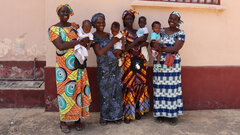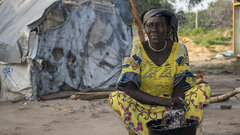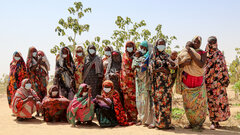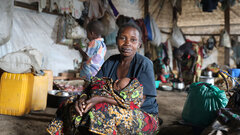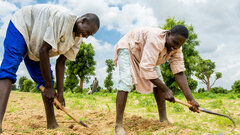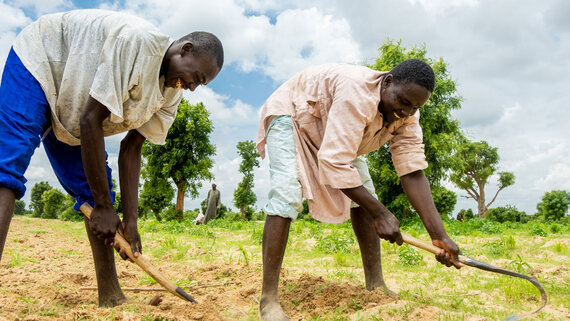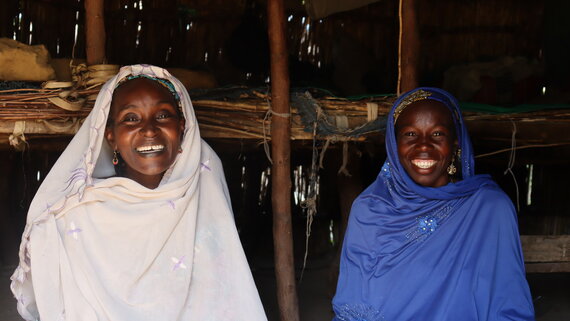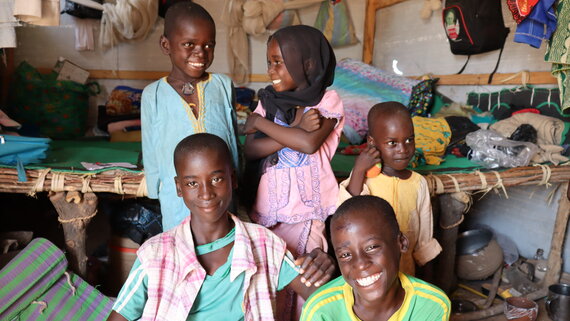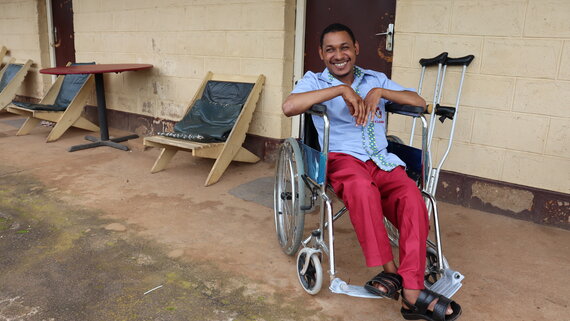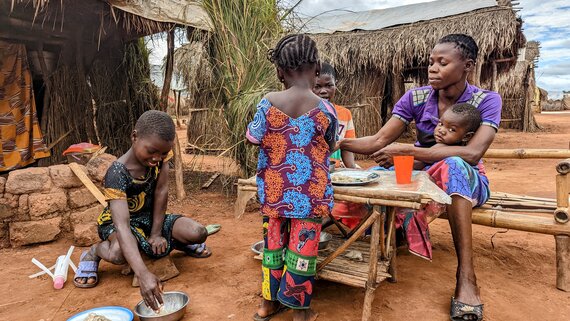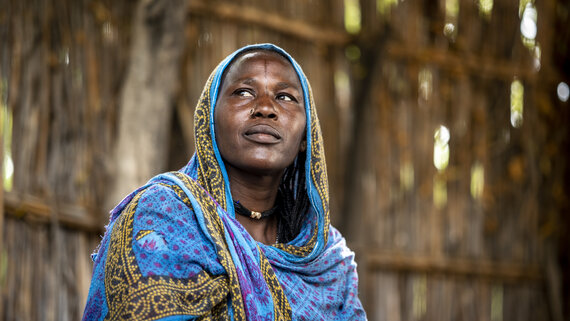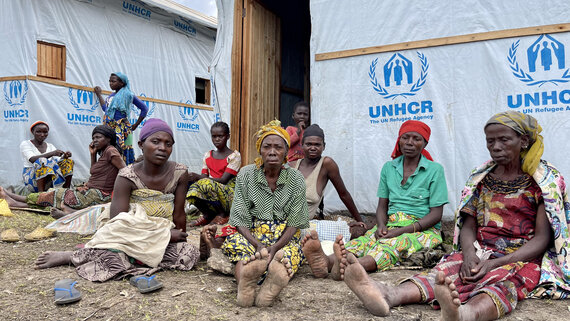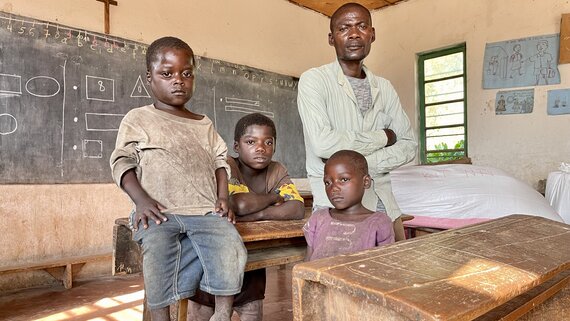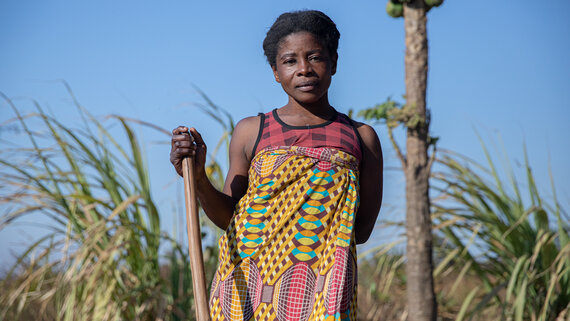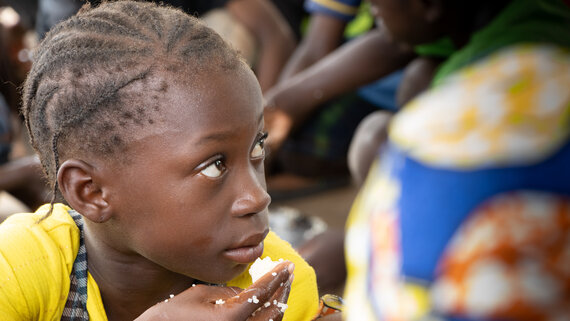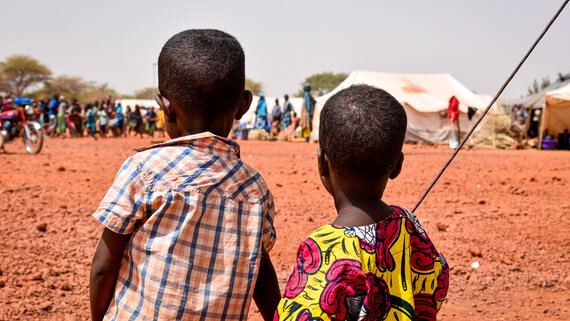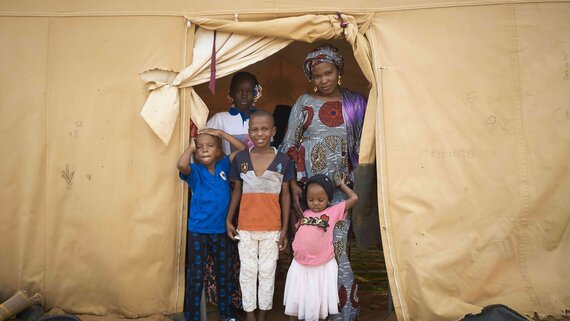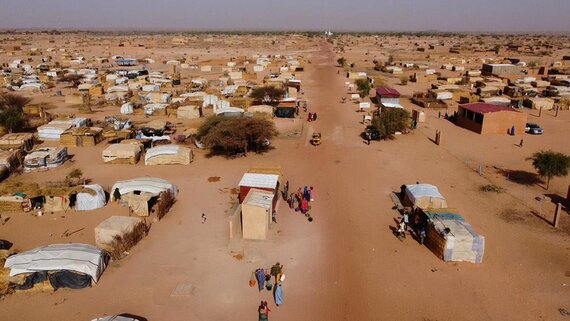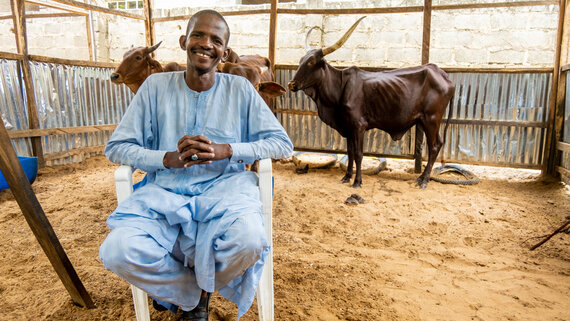Analysis of the context, crisis and needs
Burkina Faso continues to face the worst humanitarian crisis in its history, with one in four Burkinabè now in need of humanitarian assistance. The impact of the multidimensional crisis and political instability on the most vulnerable people has deepened over the past 12 months, including for some 840,000 people living in areas cut off from the rest of the country by non-State armed groups (NSAGs), whose access to basic commodities and services, fields and grazing areas and assistance is therefore increasingly limited. Some of these areas have crossed the emergency – and worse – thresholds for food and nutritional security, just when the harvest should normally have come. Furthermore, an estimated 1.7 million people in need live in areas where less than half of basic services are available. A total of 1.6 million (95 per cent) of these people are targeted by the 2023 Humanitarian Response Plan (HRP).
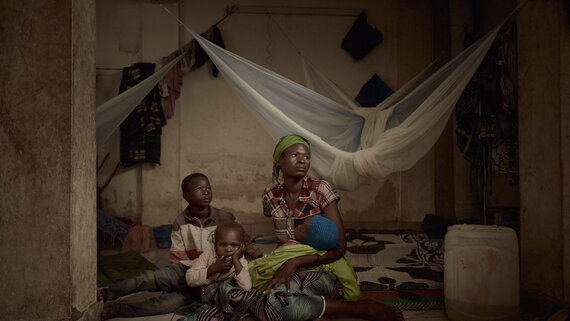
Kaya Stadium, Burkina Faso
Sombewindé Sawadogo and her children were forced to flee a massacre in Yirgou, during which four of her family members were killed. They now live at a reception site in Burkina Faso’s Centre-Nord Region.
OCHA/Michele CattaniMore than 1.76 million people have been internally displaced – including more than 800,000 people newly displaced in the first 10 months of 2022, some for the second or third time, or even more. Many of these IDPs and their host communities depend heavily on humanitarian assistance.
From January to September 2022, serious security incidents rose by 43 per cent over the previous year. Concern is growing about the spillover effect into countries along the Gulf of Guinea; 55,000 refugees and asylum-seekers are in neighbouring countries. Burkina Faso continues to host some 29,000 refugees primarily from Sahel countries (Mali).
The cumulative impact of access restrictions, multiple displacements and increasingly protracted hosting in IDP-receiving areas is exacerbating vulnerability and the risk of intercommunal conflict due to pressure on limited natural resources. The shortfall in humanitarian financing has limited operations in 2022. By the end of October, the US$805 million HRP had received only 35 per cent of funds, and many clusters' partners indicate that they could have done more if additional funding had been available.

Fada, Burkina Faso
A young girl uses a bicycle to fetch water while carrying her brother.
OCHA/Michele CattaniProjected situation in 2023 and beyond
For 2023, the humanitarian community has maintained its focus on directing humanitarian action towards the most vulnerable people in the hardest-to-reach areas. Thus, in addition to severity of needs, the HRP’s targeting methodology takes access constraints into consideration, primarily populations’ access to basic services and productive assets, as well as humanitarian partners’ ability to reach affected populations. This approach presumes that development partners will continue – and even expand – support for basic service provision and livelihood protection in more accessible areas, despite the two coups d’état the country experienced in 2022. Explicitly identifying geographic and sectoral priorities for collaboration with development approaches, the HRP applies a strict targeting of humanitarian action to focus on life-saving activities. However, humanitarian partners emphasize that development action must be prioritized to support populations in more accessible areas, and they are committed to work with development partners to mitigate and manage risk for such investments.
In comparison to 2022, the scale and severity of humanitarian needs have increased. The number of communes showing phase 3+ levels of severity of needs increased from 172 in 2022 to 218 in 2023 (27 per cent). As a result, the total number of people who need humanitarian assistance stands at 4.65 million in 2023 — a 37 per cent increase from 2022 — while the number of people targeted by humanitarian partners is 3.14 million, which is a 5 per cent increase over the previous year target. Both figures reflect slight decreases from the people in need and target figures contained in the addendum to the 2022 HRP, accounted for by clusters’ capacity analysis, even as rising unit costs due to inflation and transport costs due to access constraints contribute to increasing the overall ask for 2023.
The situation in Burkina Faso remains highly volatile, and while some limited returns were reported in 2022, they have been partial and temporary in nature. At the same time, access worsened in 2022, with 30 per cent more areas facing severe access constraints by the end of September in comparison to January 2022. Overall, Burkina Faso is unlikely to see a major reduction in humanitarian needs in the coming year, requiring humanitarian donors and partners to do more to mobilize resources, protect and expand humanitarian space and acceptance, and reach larger numbers of people in need, wherever they are located.
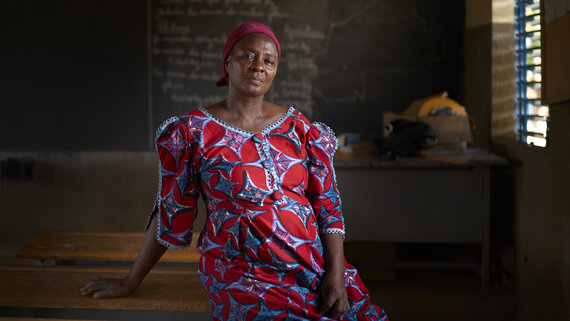
Fada, Burkina Faso
Thiombiano Larba Irène is a volunteer teacher in remedial classes for students out of school.
OCHA/Michele CattaniResponse priorities in 2023
Between January and September 2022, the humanitarian community reached an estimated 1.86 million people (49 per cent of the revised target) with multisectoral humanitarian assistance. According to the annual multisectoral needs assessment, 49 per cent of households said humanitarian assistance covered critical needs. Yet, while emergency support has contributed to mitigate the impact of the crisis, particularly in areas of lesser access challenges, rising morbidity and mortality of human and livestock populations in the areas most affected by insecurity is a growing concern.
For 2023, response priorities will focus on providing multisectoral life-saving assistance and protection, a context-specific minimum assistance package serving as the bar to measure reach. Some 80 per cent of people targeted, or 2.5 million people, will receive life-saving assistance (Strategic Objective 1). Additionally, the humanitarian community aims to provide support to 3.1 million people to improve access to basic social services, resilience and early recovery (Strategic Objectives 2 and 3).



